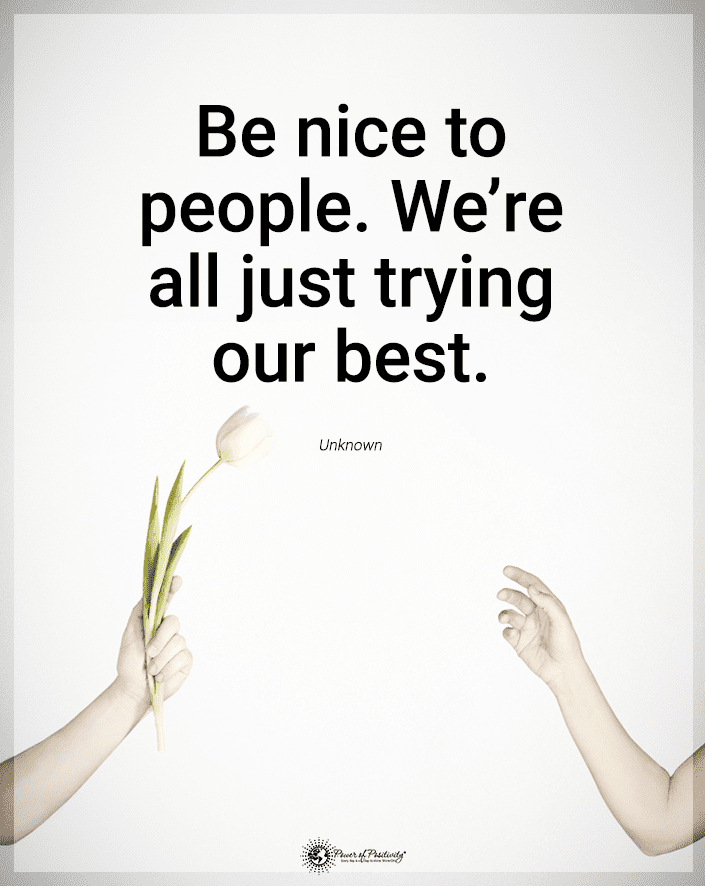Here’s what it looks like when adults have ASD.
Autism spectrum disorder (ASD) in adults often remains a hidden chapter in the narrative of many lives. Much attention is given to diagnosing and understanding autism in children. But adult autism can be a silent challenge, impacting every facet of life.
Recognizing these signs is not just about labeling differences; it’s about understanding diverse experiences and providing support where needed most. Whether you’re questioning your own experiences or seeking to understand someone close to you, this exploration into adult autism is a step towards greater awareness and empathy.
This article will shed light on seven key signs of hidden autism in adults, with a particular focus on the nuanced differences between men and women. Let’s uncover the often-overlooked signs of autism in adults and, in doing so, bridge the gap between misconception and reality.
How Many Adults Live With Autism Spectrum Disorder?
Autism Spectrum Disorder (ASD) in adults is more common than many might realize. The Centers for Disease Control and Prevention (CDC) provides crucial insights into the prevalence of ASD among adults in the United States. According to the CDC’s 2017 estimates, approximately 5,437,988 adults in the U.S. have ASD. That number equals 2.21% of the adult population. This statistic is significant as it fills a gap in data regarding adults living with ASD, a group often less highlighted in autism research and discussions.

The prevalence of ASD in adults varies by state, with estimates ranging from 1.97% in Louisiana to 2.42% in Massachusetts. The states with the highest estimated numbers of adults living with ASD include the following:
- California
- Texas
- New York
- Florida.
These variations underscore the importance of localized research and resources.
Moreover, the CDC’s findings align with the trends observed in school-aged children, showing a higher prevalence of ASD in men compared to women. Approximately 4,357,667 male adults (3.62%) and 1,080,322 female adults (0.86%) are estimated to have ASD in the U.S. This gender disparity highlights the need for gender-specific research and support strategies.
In addition to the CDC’s findings, a UK study revealed that a significant number of autistic individuals receive their diagnosis late, with 66% being diagnosed only after the age of 8 years. This statistic suggests that many individuals may reach adulthood without a formal diagnosis of ASD, potentially missing out on crucial support and interventions during their formative years.
The implications of these findings are profound. ASD is a lifelong condition. Thus, many adults with ASD require ongoing services and support. Measuring the prevalence of ASD among adults is crucial for planning and providing these services. It also emphasizes the need for increased awareness and diagnostic tools that can identify ASD in adults, particularly those who may have gone undiagnosed in childhood.
The CDC’s efforts are steps toward better understanding and supporting adults with ASD. These initiatives aim to track the transition from adolescence to adulthood in individuals with ASD and identify factors promoting successful transitions and outcomes.
The prevalence of adults living with ASD is more significant than often acknowledged, with a notable gender disparity. These findings reveal the importance of continued research, awareness, and tailored support services for adults with ASD.
Seven Hidden Signs of Adult Autism
Know these signs of ASD in adults. Note that they display slightly differently in men and women, so we break these down in men and women. However, these may also overlap in many cases.

1 – Difficulty with Social Interactions in Those With Autism
One of the most telling signs of hidden autism in adults is the struggle with social interactions. This difficulty manifests differently in men and women, reflecting the diverse nature of autism spectrum disorder (ASD).
Men:
Men with undiagnosed autism often exhibit more noticeable challenges in social settings. They may find it hard to interpret social cues, such as body language or tone of voice, leading to misunderstandings or awkward interactions. Their conversation responses might seem off-topic or blunt, and they may struggle to initiate or maintain social relationships. In group settings, men with autism might appear withdrawn or disinterested, not because they don’t desire social connection but because they find the social dynamics challenging to navigate.
Women:
Women with hidden autism are typically more adept at masking their social difficulties, a phenomenon often referred to as “camouflaging.” They might mimic social behaviors observed in others to blend in or hide their struggles. This ability to mask can lead to women with autism appearing more socially competent than they feel internally. However, this camouflaging can be mentally exhausting and lead to feelings of isolation, as their true selves feel hidden behind a façade. Women with autism might also have a small circle of close friends but struggle with broader social interactions or feel overwhelmed in large groups or new social situations.
These social interaction challenges do not indicate a lack of interest in relationships or empathy. Instead, they reflect the unique ways individuals with autism process and engage in social environments. Recognizing these nuanced differences is crucial in understanding and supporting adults with hidden autism.
2 – Intense or Specialized Interests
Another trait of autism spectrum disorder (ASD) in adulthood is the presence of intense or specialized interests. These interests can be highly specific and absorbing. They sometimes differ in men and women in their nature and expression.
Men:
Men with autism, including those diagnosed in adulthood, often have highly focused interests or hobbies. These can range from traditional subjects like trains, computers, or history to niche areas like collecting specific items or deep knowledge in a particular field. Their engagement with these interests is usually more than a pastime. Rather, it’s often an intense pursuit requiring significant time and mental energy. These interests can be a source of comfort and expertise but may also lead to challenges in social interactions if others do not share or understand their passion.
Women:
Women with autism also exhibit intense interest. However, these are often more varied and may align more closely with socially accepted norms. Their interests include literature, animals, art, and social causes.
While men might dive deep into the technical aspects of their interests, women often focus on the relational or narrative elements. For example, a woman with autism might be deeply interested in fiction, focusing intensely on character development and story arcs. Like men, these interests provide women with comfort and identity. But their more socially oriented nature might make them less apparent as a sign of autism.
In both genders, these intense interests are not just hobbies. Instead, they become integral to their identity and ways of interacting with the world. Understanding and appreciating these interests, whether in men or women, is key to understanding individuals with autism.
3 – Challenges in Non-Verbal Communication and ASD
Non-verbal communication encompasses body language, facial expressions, and eye contact. It is yet another area where adults with hidden autism may face challenges. These challenges manifest differently in men and women, affecting their interactions and relationships.
Men:
Men with autism often have more pronounced difficulties with non-verbal communication. They might struggle to interpret others’ body language or facial expressions. It often leads to misunderstandings in social interactions. Their non-verbal cues can also be atypical. For instance, they may have limited use of gestures, or their facial expressions might not align with the social context. Eye contact can be particularly challenging. In fact, some men with ASD avoid it altogether or hold it in a way that feels uncomfortable to others.
These non-verbal communication challenges can make social interactions feel awkward and can sometimes be misinterpreted as disinterest or unfriendliness.
Women:
Women with autism may also struggle with non-verbal communication. However, they often develop strategies to mask these difficulties. They might learn to mimic facial expressions and gestures observed in others, even if they don’t naturally understand the nuances behind them. This masking can make it seem like they have a better grasp of non-verbal cues than they do.
However, maintaining this façade can be mentally exhausting and may not always be successful, especially in high-stress or unfamiliar situations. Women with autism might also have a preference for less direct eye contact, but they often learn to manage it less noticeably.
Non-verbal communication challenges do not indicate a lack of emotional depth or empathy for both men and women. Rather, they stem from differences in processing and responding to unspoken social cues. Recognizing and adapting to these challenges in communication styles is crucial for meaningful interactions with adults with hidden autism.
4 – Sensory Sensitivities and ASD
Sensory sensitivities are a common facet of autism spectrum disorder, affecting how individuals process and respond to sensory information. These sensitivities can vary greatly and are often more nuanced in adults, with distinct differences observed between men and women.
Men:
Men with autism may exhibit more overt reactions to sensory stimuli. They might be particularly sensitive to sensory inputs like loud noises, bright lights, or certain textures. This sensitivity can manifest as a strong aversion to environments with sensory overload, such as crowded places or loud social events.
Some men might wear headphones in noisy environments or avoid certain clothing materials that feel uncomfortable. In some cases, these sensory challenges can lead to avoidance of certain activities or places, impacting daily life and social interactions.
Women:
Women with autism also experience sensory sensitivities, but they often internalize their reactions more than men. They might be equally sensitive to loud noises or bright lights but have better-coping mechanisms to hide their discomfort in social situations. These can include planning escape routes in overwhelming environments or subtly using sensory aids like fidget toys.
However, constantly managing these sensitivities can be mentally taxing and lead to increased stress and anxiety. Women with autism might also have specific preferences in clothing or food textures, which are often seen as mere quirks rather than signs of sensory sensitivity.
In both men and women, these sensory sensitivities are not just preferences or dislikes but integral to how they experience the world. Understanding and accommodating these sensory needs can significantly improve the quality of life for adults with hidden autism.
5 – Need for Routine and Challenges for Adults With Autism
A strong preference for routine and difficulty coping with change is a common characteristic of autism spectrum disorder (ASD), and it manifests in adults in gender-specific ways. The need for predictability and the challenges of change can significantly impact daily life and well-being.
Men:
Men with autism often exhibit a pronounced need for routine and predictability. They may adhere to strict schedules and become distressed when their routines are disrupted. This behavior can include specific rituals in daily activities, like eating the same meals at the same time each day or following a rigid sequence of actions before leaving the house.
Changes, whether minor or significant, can be particularly challenging and may trigger anxiety or stress. For example, a sudden change in work schedule or an unexpected social event can be difficult for men with autism to adapt to, leading to a preference for environments and situations where predictability is assured.
Women:
Women with autism also value routine. But they may better cope with changes due to their often-developed masking abilities. They might still prefer a structured schedule and find comfort in familiar routines. However, they can sometimes adapt more readily to new situations. This adaptability, however, can come at a cost.
The effort to appear flexible and cope with changes can be mentally exhausting for women with autism, leading to increased stress and anxiety in the long run. Women might also create intricate coping strategies to manage changes, such as planning extensively for potential scenarios or relying on subtle rituals to maintain control.
In both men and women with ASD, the need for routine and the challenges with change are not just preferences for familiarity; they are essential coping mechanisms to navigate a world that can often feel unpredictable and overwhelming. Recognizing and respecting the importance of routine and providing support during times of change can greatly assist adults with hidden autism in managing their daily lives.
6 – Repetitive Behaviors and Rituals and Autism
Repetitive behaviors and rituals are common in individuals with ASD. In fact, these may help to manage anxiety, provide comfort, or cope with sensory challenges. These behaviors can be more subtle in adults and vary between men and women.
Men:
Men with autism may engage in more noticeable repetitive behaviors or stimming (self-stimulatory behavior). That can include actions like hand-flapping, rocking, or tapping, especially in situations of stress or excitement. They might also develop rituals around daily activities, such as arranging objects in a specific order or following a strict routine. These behaviors and rituals can provide a sense of control and predictability. However, they are often more visible to others and can sometimes be misunderstood or stigmatized in social or professional settings.
Women:
Women with autism also exhibit repetitive behaviors, but they tend to be more subtle and socially acceptable. They might engage in activities like twirling their hair, fidgeting with jewelry, or organizing and reorganizing items. These behaviors can be easily missed by most or misinterpreted as habits. Women with autism might also develop rituals that are less obvious, such as mental routines or silent counting. Like men, these behaviors provide comfort and a way to manage sensory overload or anxiety. However, the subtlety of these actions can make them less apparent as signs of autism.
In both men and women, repetitive behaviors and rituals are not just habits. Rather, they are coping mechanisms that play a significant role in managing the challenges of autism. Understanding and accepting these behaviors as part of the individual’s way of interacting with the world is crucial for providing appropriate support and creating an accepting environment.
7 – Co-occurring Mental Health Conditions
Those with autism spectrum disorder often have co-occurring mental health conditions. These conditions can sometimes mask or complicate the recognition of autism, particularly in adults.
Men:
Men with autism are more likely to be dealing with co-occurring conditions, including Attention Deficit Hyperactivity Disorder (ADHD), Obsessive-Compulsive Disorder (OCD), and other neurodevelopmental disorders. These conditions can overlap with or exacerbate the symptoms of autism. Thus, it becomes difficult to distinguish the underlying autism itself.
For instance, the hyperfocus associated with ADHD might be mistaken for the intense interests characteristic of autism. Or, the repetitive behaviors of OCD might overlap with autistic behaviors. The presence of these co-occurring conditions can sometimes lead to a delay in the diagnosis of autism. That happens when the focus might be on treating the more apparent symptoms of these other disorders.
Women:
Women with autism are more likely to internalize mental health issues that may include anxiety, depression, and eating disorders. These conditions can be intensified by the stress of camouflaging autistic traits and the social challenges they face. Anxiety and depression, in particular, can be exacerbated by the ongoing effort to fit in and the internalization of social failures. These mental health challenges can overshadow the autism itself, leading to misdiagnosis or a complete oversight of the autism diagnosis. For women, the intersection of autism with these mental health conditions creates a complex clinical picture that requires close consideration and a holistic approach to treatment.
The presence of co-occurring mental health conditions highlights the need for comprehensive assessments for either women or men. It also shows the need to consider the full range of an individual’s experiences and challenges. Understanding these co-occurring conditions is crucial in providing effective support and interventions for adults with hidden autism.
Final Thoughts on Understanding the Signs of Autism in Adult Males and Females
Recognizing the signs of hidden autism in adults is critical in understanding and supporting an overlooked segment of the population. The manifestation of ASD in adults can be subtle and varies between men and women. But both genders have unique challenges in both identification and support.
For men, the more noticeable difficulties in social interactions, overt sensory sensitivities, and pronounced repetitive behaviors can be key indicators. Still, too many people misunderstand them. Women, on the other hand, may adeptly mask their struggles. That causes internalized stress and overlooked symptoms, particularly in social adaptability and subtle sensory issues.
The co-occurrence of mental health conditions further complicates the picture, necessitating a nuanced approach to diagnosis and support. Healthcare professionals, family members, and communities must become aware of these differences to ensure that adults with autism receive the assistance they need.
This awareness is not just about providing support. Rather, it’s about better understanding how individuals experience and interact with the world. It also allows us to appreciate the unique perspectives and strengths that individuals on the autism spectrum bring to our collective human experience.




















